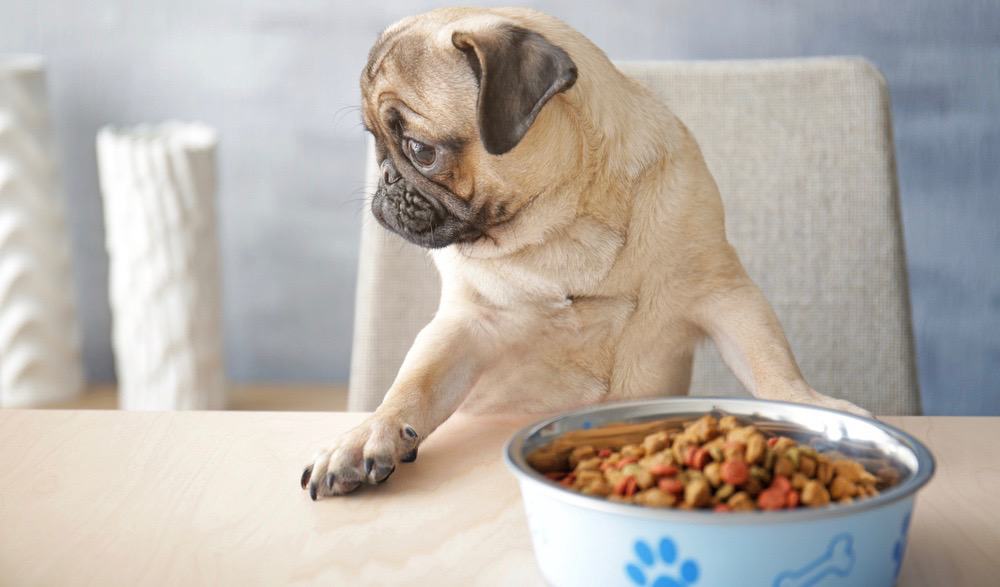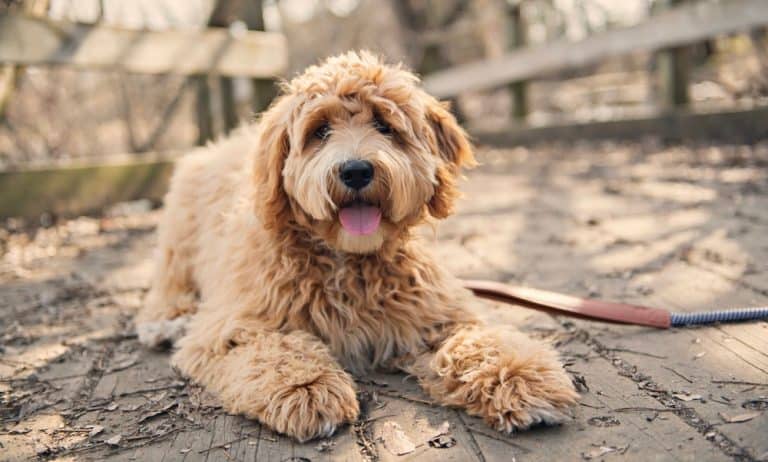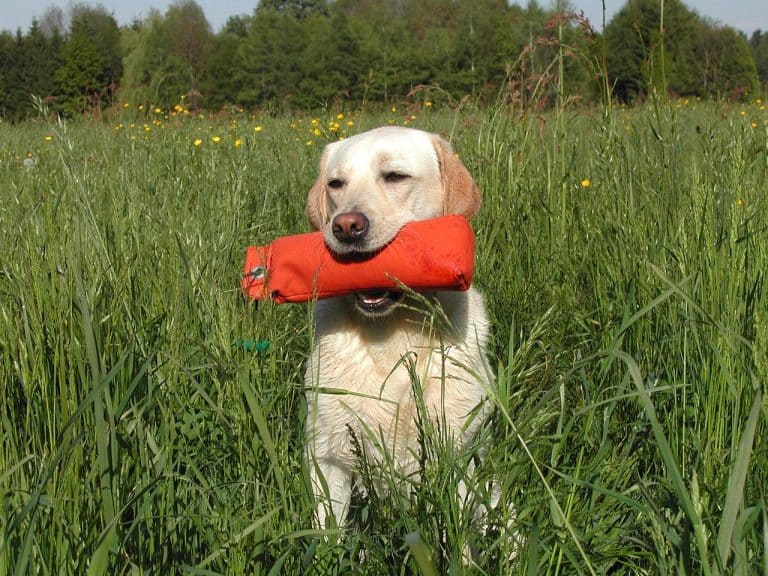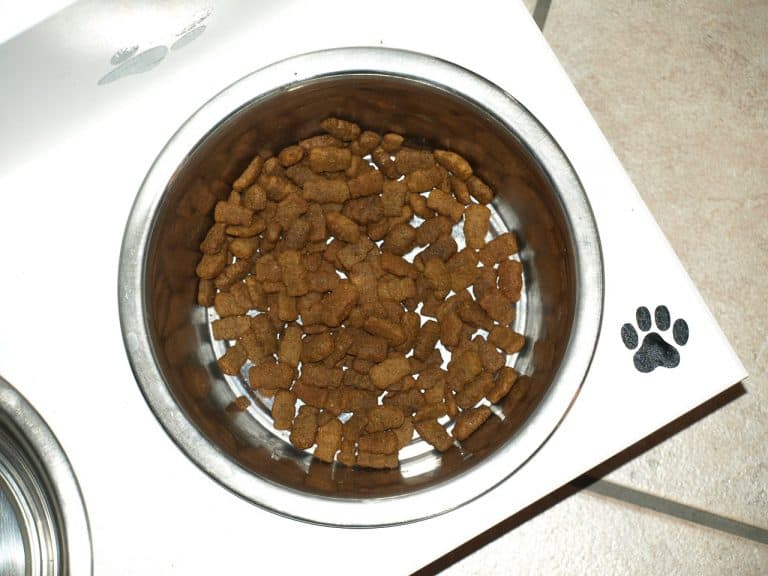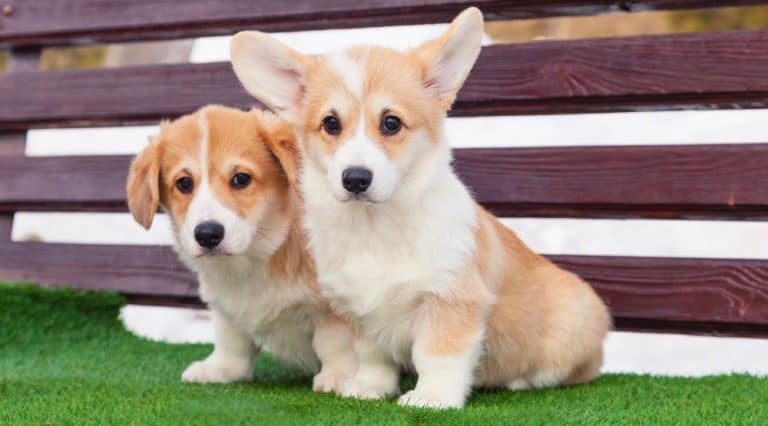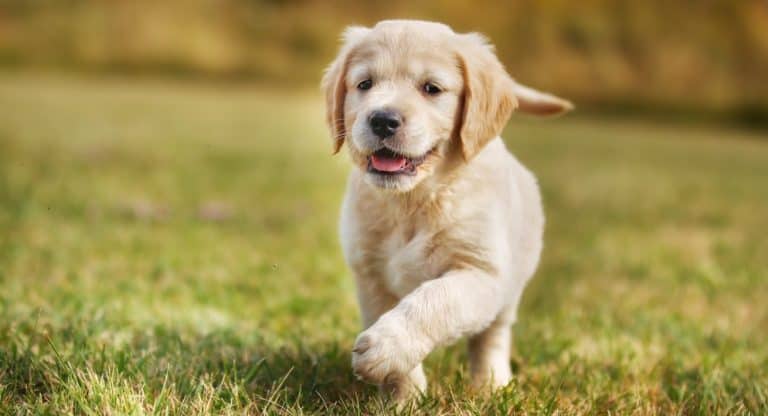How Much To Feed A Pug Puppy? 4 Week – 6 Week – 8 Week Old Pug Puppies
Feeding your pug puppy properly and ensuring that they get the right nutrients is an essential part of taking good care of them.
Pug puppies have different nutritional requirements than adult pug puppies because they need certain vitamins and minerals to help in their growth and maintain a healthy weight.
This article will give you more information on how much to feed a pug puppy, what food to give them, the pug puppy feeding chart, when to switch to adult food, and many more.
How Much Should A Pug Puppy Eat?
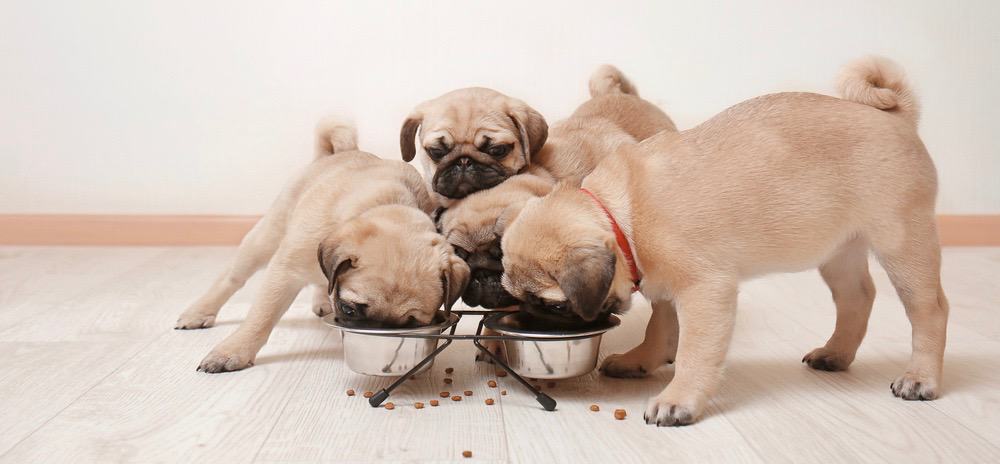
How much to feed a pug puppy depends on their age, activity level, and the type of food. Your pug should be eating the proper amounts of calories and getting enough nutrients to maintain healthy growth and development.
Eating the wrong type of food or consuming too much can make your pug gain excess weight which can affect their health and well-being.
Since pugs are a brachycephalic breed, they are prone to joint problems, breathing problems especially if they are overweight.
Pug Puppy Feeding Chart
A pug puppy feeding chart shows the amount of food your pet should be eating as they grow older. The number of calories your puppy needs can be calculated based on their current weight.
A growing pug puppy needs twice their RER (Resting Energy Requirement) per day. This can be calculated by multiplying the puppy’s body weight in pounds to the power of ¾ by 70.
For example, if the weight of your pug is 4kg, their RER will be 70(4kg)3/4 =200. Therefore, their calorie requirement will be 2 multiplied by 200, which is 400 calories per day. If your puppy is more active, it may need more calories.
The following is a pug puppy feeding chart:
2-Week-Old Pug Puppy
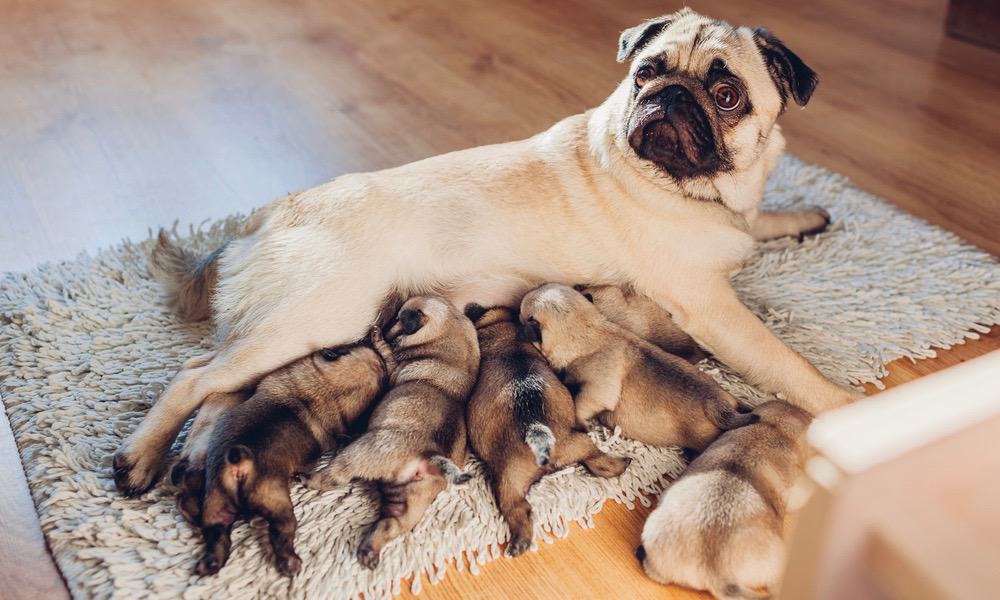
A pug puppy who is two weeks old depends fully on its mother’s milk or a commercial equivalent for feeding.
You should not feed them any kibbles or wet food because their stomach is not yet developed to handle the food. The mother’s milk contains all the necessary nutrients a pug puppy needs for its growth and development.
When your puppy turns three weeks, you can start the weaning process.
4-Week-Old Pug Puppy
At 4 weeks, your pug puppy is still feeding on the mother’s milk, but you can also start introducing solid foods in their diet. The food can be wet, dry kibble, or homemade.
If you want to feed your puppy homemade food, ensure that you ask your vet for guidelines so that you can make it nutritional for your pug.
Feed your pug ½ a cup of solid food spread over four meals in a day. Solid foods should be mixed with warm water or puppy formula for easy digestion.
6-Week-Old Pug Puppy
At 6 weeks, you have the option to fully wean your pug puppy but if the mother can still produce milk, allow her to feed the puppy.
At this stage, you will notice that their appetite is increasing, therefore, you can start developing a routine of eating solid foods. Maintain ½ a cup of solid food spread through four mealtimes.
Ensure that the food you are feeding them is high in quality and nutrient-dense to help in supporting healthy growth both mentally and physically.
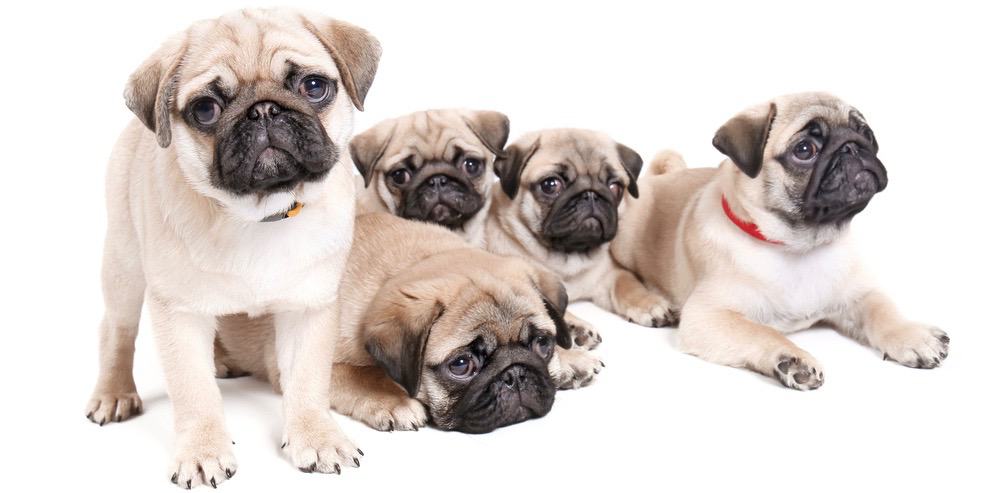
8-Week-Old Pug Puppy
At 8 weeks, a pug puppy is ready to move in with a new family. Ensure that the communication between you and the breeder is clear on the type of food the puppy is eating and how their eating schedule looks like before adopting the puppy.
An 8-week-old pug puppy should be fed ¼ cup of dry food or 3 ounces of wet food spread over four mealtimes. .
10-Week-Old Pug Puppy
As your pug puppy gets older, the amount of food needed to support their growth and development increases.
However, you should avoid giving them more food than they need because they can easily become overweight and develop bad eating habits. At 10 weeks, you can feed your puppy 1/3 cup of dry food, or 4 ounces of wet food spread over three times per day.
12-Week-Old Pug Puppy
When your pug puppy is 12 weeks old, you can continue to feed them 4 ounces of wet food or 1/3 cup of dry food. During this stage, your puppy is more active, therefore you can slightly increase the amount of food they are eating depending on the activity level.
Ensure that they are maintaining a healthy weight by looking at the pug puppy weight chart and speaking to your vet. You can give them treats during training but avoid giving them more as they can add unnecessary weight.
Best Puppy Food For Pugs
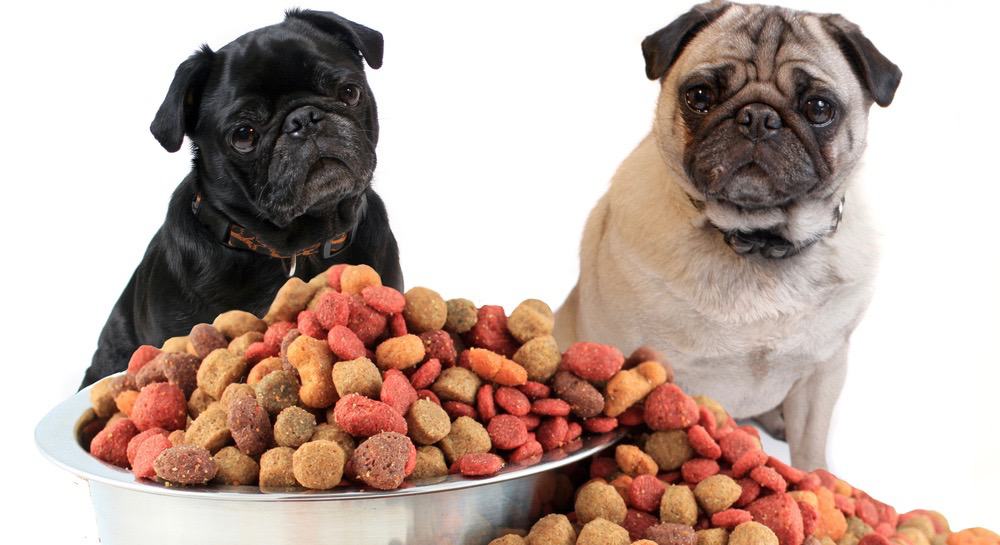
Editor’s Choice
#1. Royal Canin Pug Puppy Dry Food
This Royal Canin dog food is formulated specifically for pug puppies who are between the ages of 8 weeks and 10 months.
Pug puppies are known for their short muzzle and brachycephalic jaw, which makes it difficult for them to eat some kibble. The kibble in this formula has the shape of a cloverleaf and nutritional benefits to help your pug puppy grow.
Pros
- Helps to maintain a healthy coat and skin.
- Helps to maintain a balanced intestinal flora and supports the digestive system.
- Has antioxidants to improve the immunity of the puppy.
- The kibble is easy to pick up.
Cons
- Causes stomach problem in some puppies.
Runner-Up
#2. Wellness CORE Small Breed Puppy Dog Food
Help your pug puppy to have healthy growth by feeding them the Wellness CORE Puppy Food. This grain-free, natural puppy dry food has DHA for the cognitive development of your pug.
It is formulated with natural nutrition that combines nutrient-dense superfoods with premium proteins to support your puppy’s whole-body health. This puppy food has antioxidants, omega fatty acids, probiotics, glucosamine, and taurine.
Pros
- Improves the immune system of the puppy.
- Helps to support digestive health.
- Supports the general growth and development of your pug.
Cons
- Picky eaters may not like it.
#3. Hill’s Science Diet Puppy Dog Food
This puppy dry food gives your pug the precise nutrition they need to maintain a healthy lifestyle. It is made with great ingredients such as chicken and barley to meet your puppy’s nutritional needs.
The nutrient and purity content of this dry dog food meets the strict requirements of the industry standards. The ingredients include DHA from fish oil, antioxidants, and vitamin C and E.
Pros
- The kibble is small making digestion easier.
- Supports healthy eye and brain development as well as learning ability.
- Maintains a healthy immune system.
- No artificial flavors, colors, or preservatives.
Cons
- May loosen stool in some puppies.
#4. Now Fresh Small Breed Puppy Dog Food
With this Grain-Free Dry Dog Food your puppy gets 100% fresh salmon, turkey, and duck, and 100% fresh omega 6 and 3 from canola and coconuts.
It also has wholesome fruits, berries, veggies such as spinach, peas, pumpkin. Cranberries, kelp, alfalfa sprouts, carrots, and lentils. It contains zero gluten, grains, corn, wheat, soy, beef, by-products, or artificial preservatives.
Pros
- Supports the brain development of your puppy.
- Balanced fats and proteins support your puppy’s healthy and active lifestyle.
- Probiotics help in digestive health.
- The antioxidants support the immune system.
Cons
- The kibbles may be too small for some puppies to chew.
#5. Merrick Lil’ Plates Chicken & Sweet Potato Dog Food
This puppy dry food is suitable for small puppies and the first ingredient is real deboned chicken. It is formulated with DHA, prebiotics, and probiotics.
It is formed into a small kibble size that is easy to chew. This dry food does not have gluten and grains and it is developed with high amounts of amino fatty acids as well as chondroitin and glucosamine.
Pros
- The crunchy texture helps to keep teeth clean and reduce plaque.
- Helps promote a shiny coat and healthy skin.
- Supports joint and hip function.
- Helps to maintain healthy digestion.
- Helps to maintain high energy levels and build healthy muscles.
Cons
- Poor packaging in some batches.
Understanding Pug Puppy Nutritional Needs
Puppy food is formulated differently than adult food because puppies have different nutritional needs than adult dogs.
Since pug puppies require energy to grow strong and big, their food should be packed with more nutrients and higher in calories. This includes more protein, fat, vitamins, amino acids, omega 3 fatty acids, and minerals.
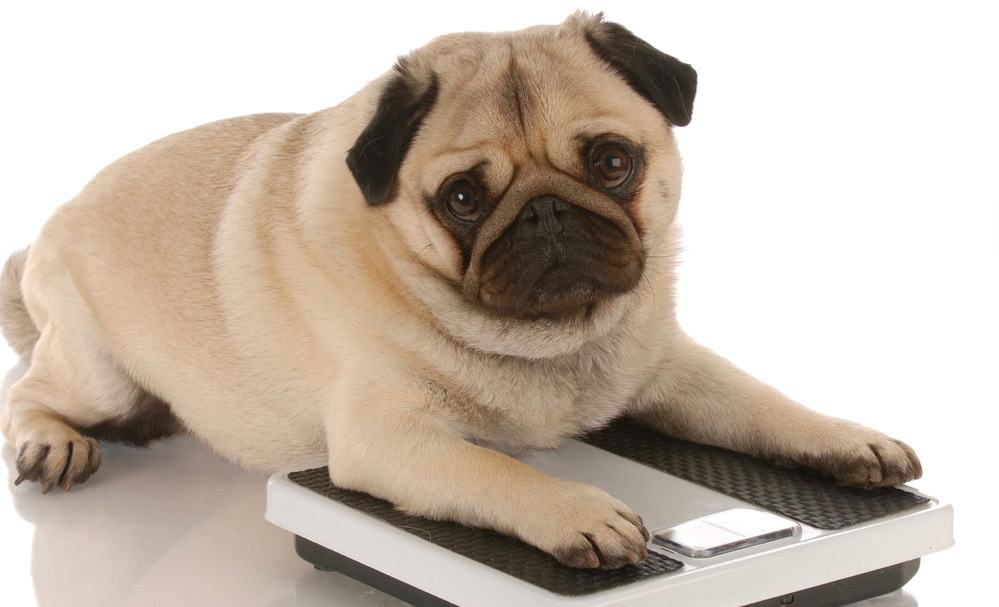
Feeding a pug puppy means giving them food that is formulated specifically for small breeds. Also, ensure that the food you are buying for your pug is labeled ‘puppy food’ and ‘complete’.
Kibble vs Wet Food For Pug Puppies
Commercial kibble is the most common dog food option in the market and the manufacturers have worked hard in balancing the ingredients to create a nutritionally balanced formula for dogs including pugs.
If you choose to feed kibble to your pug, ensure that the first ingredient on the list is real meat.
Commercial wet food for dogs is dense in nutrition than kibble because it usually contains fewer grains and fresher ingredients. Most wet foods have their first ingredient as seafood or whole meat and broth. Sometimes they have veggies in them for a good measure.
Whether you choose wet food or kibble, ensure that you follow the packaging guidelines on how much you should give your pug and that they are from a reputable brand.
2-Month-Old Pug Puppy Weight
At two months, a pug puppy weighs between 2 and 4 pounds. At this age, your puppy is not in its ‘growth spurt’ stage yet, but it is crucial to start feeding them weaning food that is appropriate and nutritional.
At this stage, they are susceptible to illnesses because they are no longer feeding on their mother’s milk which gives them immunity. Their bodies are not able to build strong immunity, therefore, watch them closely for any signs of illnesses.
3-Month-Old Pug Puppy Weight
When a pug puppy is 3 months old, they weigh between 4 and 7 pounds. During this age, your pug puppy will be growing rapidly and feeding them a healthy diet is necessary.
This is the developmental stage and the ideal time to start potty training, house training, bite training, puppy training, and puppy socialization.
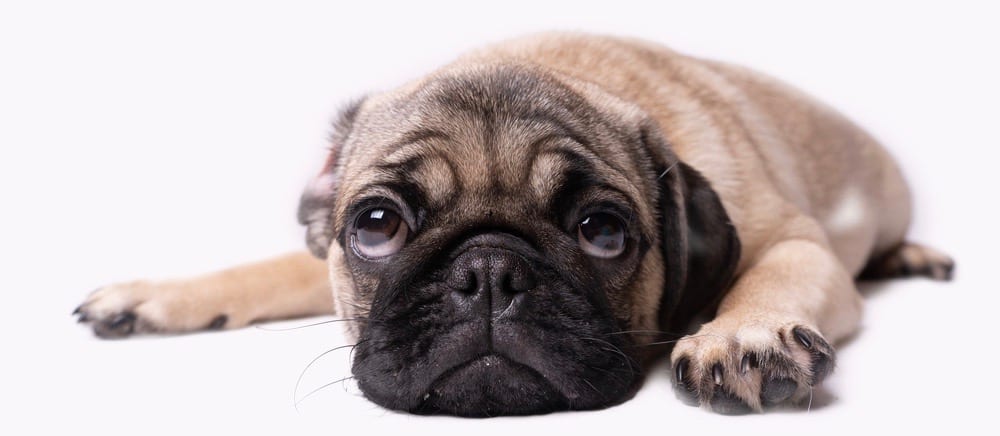
You should also take your pug puppy to the vet for their first vaccinations when they are three months old.
4-Month-Old Pug Puppy Weight
At four months, a pug puppy weighs between 5 and 9 pounds. During this age, your pug will start losing their puppy look and start resembling their mini versions of their adult selves.
You can continue to teach them more new things because they are very curious. Continue with the training and give them treats as rewards.
How Much Do Pugs Grow Each Week?
The growth of individual pug puppies is different because growth can be affected by certain factors including genetics, age, health, and exercise. Therefore, it is difficult to know exactly how much a pug puppy grows each week.
The weight of a pug puppy in the first 4 months of their lives can be seen to be rapidly increasing from around 2 pounds to about 9 pounds.
Their weight then slowly increases to 14 pounds when they are 8 months old. From here, their weight flattens until they reach 1 year old.
Providing your puppy, a healthy, well-balanced diet and exercise will ensure that they achieve their optimal growth.
Switching From Puppy Food To Adult Food
When pug puppies grow into adult dogs, they are less active than when they were young and not growing at a higher rate at all. Therefore, their food should contain less protein than what they were getting as puppies.
Typically, you can switch your pug puppy food to adult food when they are between the ages of 9 and 12 months. The process should be done intentionally and slowly to avoid digestive issues which may cause messes around the house.
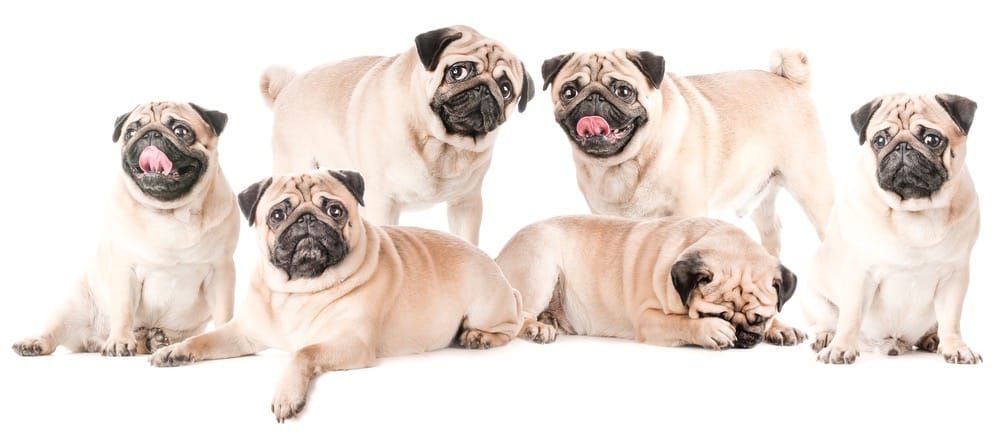
The whole process should take about one week. Start with ¼ adult food and ¾ puppy food per day for the first couple of days, then ½ adult food and ½ puppy food for a few days, and then ¾ adult food and ¼ puppy food for the remaining days. Finally, you can feed your pug adult food.
What If My Pug Won’t Eat?
There are many reasons why your pug is not eating. You need to consider whether you are giving them more food than they need. If your puppy does not want to eat their food in the evening, they may be satisfied and full.
However, other problems may be causing your puppy to not eat their food. Dental issues such as bleeding gums, red gums, and toothache can make eating uncomfortable for your puppy.
Certain vaccines have side effects such as loss of appetite, so if you have recently vaccinated your pug, that could be the reason why they are not eating their food.
Another reason could be a health condition, therefore, if you are not sure why your puppy is not eating their food, take them to the vet for examination.
Can You Freefeed A Pug Puppy?
Free feeding is where food is available for your puppy throughout the day. It is the easiest way of feeding your puppy because you fill up their food bowl and top it up when you notice it is going low.
However, puppies that are free-fed have a higher risk of being overweight and since pugs are prone to obesity, this can cause a health issue.

Also, leaving food in the open for a long time is not sanitary at all especially if it is wet food because bacteria can easily form making the food go bad quickly causing stomach problems for your pug.
Should You Feed A Pug Puppy Supplements?
Giving your pug puppy a healthy and balanced diet should provide them with all the nutrients they need for healthy growth and development.
Therefore, it is not advisable to give your puppy multivitamin supplements such as calcium, because excess amounts can lead to skeletal issues affecting their growth.
Supplements can be given to your puppy if it is advised by the vet to help with certain health issues. Before supplementing your pug’s diet, seek advice from the vet.
How Much Water Should A Pug Puppy Drink?
Generally, dogs need one ounce of water per pound of their body weight per day. But the amount can go high up to two ounces per pound of their body weight if the weather is hot or the dog is more active.
However, pug puppies need more water than an average dog. To start with, they need approximately 1.25 ounces per pound of their body weight per day.
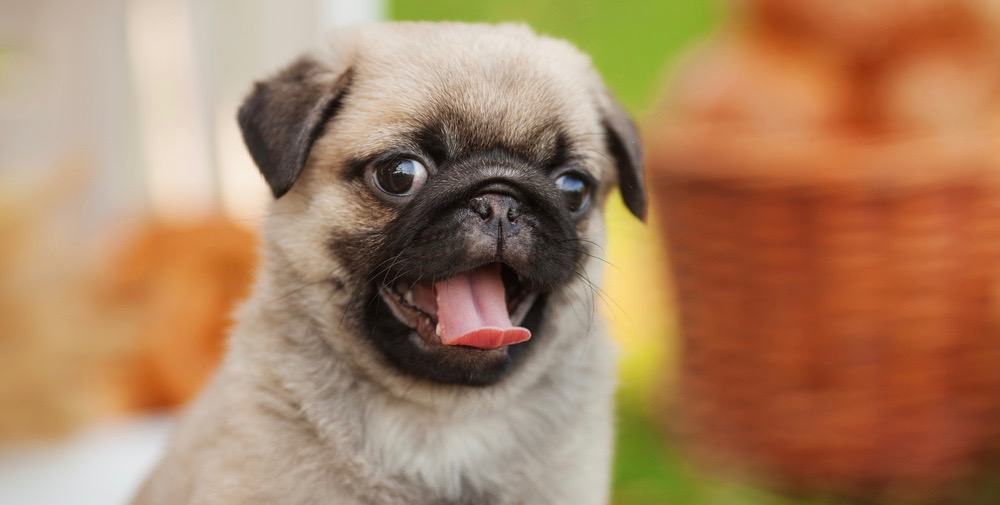
This is because pugs being a brachycephalic breed with an elongated palate and stenotic nares, are prone to panting and breathe deeply, hence expelling more moisture. Thus, needing more water to replace the moisture than the average dog.
How Much Exercise Does A Pug Puppy Need A Day?
Pugs have a higher risk of obesity, and their health can be seriously affected if they do not get good exercise.
However, they are also prone to breathing problems, so giving them too much exercise can be an issue. Therefore, finding a balance is essential in ensuring that they maintain a healthy weight.
A pug puppy needs a minimum of two sessions of 20-minute exercise a day. Half of it should be walking and the rest can be a different type of exercise such as light faster walking, playing, and fetching.
The exercise you give your pug puppy should be light to moderate cardio to keep their body moving and slightly increase their heart rate.

